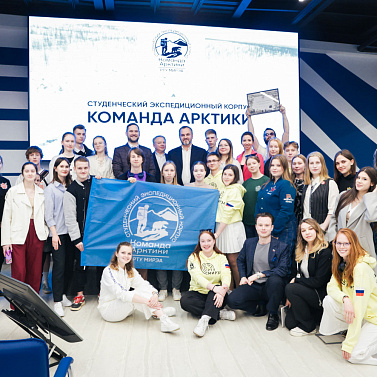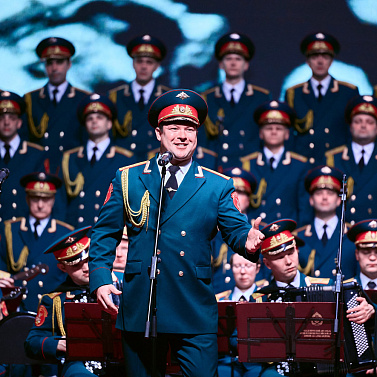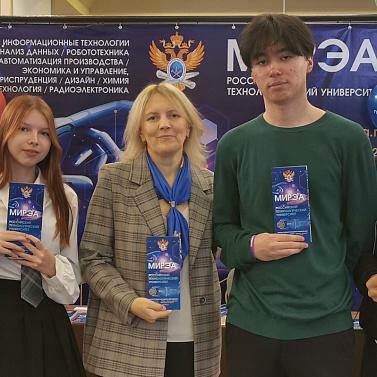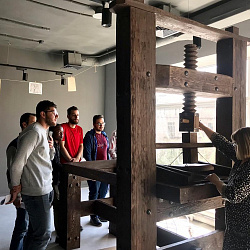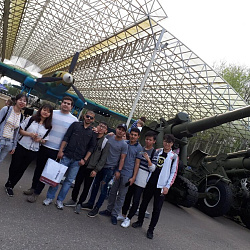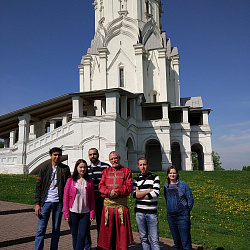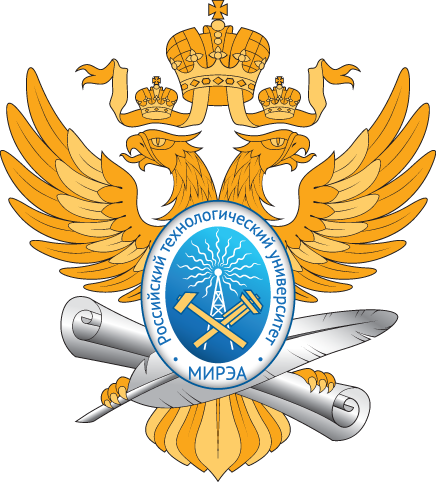In 2019, the students of the RTU MIREA Preparatory Department for foreign citizens visited a number of excursions
14.05.2019
On May 6, a group of students of the RTU MIREA Institute of International Education, Preparatory Department for foreign citizens together with their professor, visited the architectural ensemble and the park in Tsaritsyno museum-reserve.
Foreigners enjoyed their visit to the estate of the late XVIII century palace chambers which reproduced the park way along which the Empress Catherine II used to walk: along the ravine and along the bank of the pond. The students were very enthusiastic about the history of architectural structures, such as the Kitchen building (the Bread House), cavalier buildings, Figured bridge, Grape gates. They were also greatly impressed by the Life-Giving Source, the Temple of the Icon of the Mother of God.
The history of the Principal Palace construction was also most interesting. The students could see and appreciate the layouts of architectural ensembles constructed by Vasily Bazhenov and Matvey Kazakov, the two famous Russian architects.
While walking in the park, foreign visitors tasted for the first time the authentic Russian bread drink - kvass - and enjoyed its unforgettable taste.
On May 8, the university professors and trainees visited Kolomenskoye, the Moscow State United Museum-Reserve
The Museum-Reserve located in the southern part of Moscow used to be a royal residence. The construction of the complex began with the white-stone Church of the Ascension, which is still located in the park and is the oldest building of the architectural ensemble. Wooden buildings in the territory of Kolomenskoye are also of great interest. The original wooden palace of Tsar Alexei Mikhailovich was destroyed in 1768 by the order of Catherine II, but the plan of the palace which happened to survive made it possible to recreate it in 2010 not far from its original location.
Between the palace and the architectural ensemble, there is a park with a linden alley, an apple orchard, ravines, and an embankment with a picturesque view of the Moscow River and the city.
During a two-hour tour, foreign students learnt the history of the museum, listened to the story about how the royal families used to live, how the feasts were held, saw the objects of daily use and were able to fully plunge into the atmosphere of Tsarist Russia.
On the eve of the Victory Day celebrations, foreign students and lecturers visited the Central Museum of the Great Patriotic War of 1941-1945, the central object of the memorial Victory Park on Poklonnaya Hill. The exposition of the museum - exhibition halls, six dioramas, dedicated to the largest military operations of the war and created by famous masters of the Studio of Military Artists named after Grekov.
A large collection of items telling about the Great Patriotic War, made an unforgettable impression on foreign visitors. They could see with their own proper eyes the weapons, the military equipment, the uniforms, awards, photographs, documentaries and documents from the war times, letters from the front, works of art depicting the war: paintings, sculptures, graphics works, and posters. All without exception could strongly feel for the mother bending over her dead son‘s body.
Also, the young people will long remember the exhibition of military equipment with over 300 samples of heavy machinery and equipment of the USSR armed forces and its allies.
The excursion culminated in The Road to Victory, the light and sound video installation projected on the dome of the Hall of Glory, which in just 11 minutes recaptured the key events of the war: the beginning of the war, the battle for Moscow, the Siege of Leningrad, the Stalingrad battle, the storming of Berlin, and the Victory Parade.
After leaving the Museum of the Great Patriotic War, the foreign students could well realize why the Victory Day is one of the most important holidays in Russia.
The young people from Syria, Egypt, Congo, Iran visited the Library of Foreign Literature. The students learnt about the history of the library and its current projects. The young people were also invited to take a look at the library’s several cultural centers: Azerbaijani, American, French, and Japanese.
Also, the participants in the tour got a chance to visit the Rare Book Foundation which is to officially open in the near future. There, the library’s guests could see a working copy of the Gutenberg printing press and the antique copies of unique books from around the world: such as books made of parchment and tiny volumes smaller than a matchbox.
Foreign students also visited the Pearson Learning Studio Linguistic Resource Center, where they were informed about the methods to learn English using materials for free use collected at the Center.
Foreign students visited the Moscow Metro Vocational Guidance Center.
There, they learnt about the history of the Moscow metro in its different periods: for example, the ongoing construction of the new stations and the story of a special armored train operating during the Great Patriotic War. The students saw various historical items, documents and photographs: ticket gates, passenger tickets, certificates and uniforms of workers, fragments of decorative design elements of stations made of valuable materials, such as marble and granite, and even fragments of sculptures illustrating the unique architecture of the Moscow metro, due to which it is recognized to be one of the most beautiful underground systems in the world.
Foreign students even tried to act as motormen on a special interactive simulator operating a virtual subway train.
Students from Syria, Egypt, Congo, Iran, Mauritania, Chad, Djibouti, Senegal, Guatemala, and Equatorial Guinea went on the excursion.
Foreigners enjoyed their visit to the estate of the late XVIII century palace chambers which reproduced the park way along which the Empress Catherine II used to walk: along the ravine and along the bank of the pond. The students were very enthusiastic about the history of architectural structures, such as the Kitchen building (the Bread House), cavalier buildings, Figured bridge, Grape gates. They were also greatly impressed by the Life-Giving Source, the Temple of the Icon of the Mother of God.
The history of the Principal Palace construction was also most interesting. The students could see and appreciate the layouts of architectural ensembles constructed by Vasily Bazhenov and Matvey Kazakov, the two famous Russian architects.
While walking in the park, foreign visitors tasted for the first time the authentic Russian bread drink - kvass - and enjoyed its unforgettable taste.
On May 8, the university professors and trainees visited Kolomenskoye, the Moscow State United Museum-Reserve
The Museum-Reserve located in the southern part of Moscow used to be a royal residence. The construction of the complex began with the white-stone Church of the Ascension, which is still located in the park and is the oldest building of the architectural ensemble. Wooden buildings in the territory of Kolomenskoye are also of great interest. The original wooden palace of Tsar Alexei Mikhailovich was destroyed in 1768 by the order of Catherine II, but the plan of the palace which happened to survive made it possible to recreate it in 2010 not far from its original location.
Between the palace and the architectural ensemble, there is a park with a linden alley, an apple orchard, ravines, and an embankment with a picturesque view of the Moscow River and the city.
During a two-hour tour, foreign students learnt the history of the museum, listened to the story about how the royal families used to live, how the feasts were held, saw the objects of daily use and were able to fully plunge into the atmosphere of Tsarist Russia.
On the eve of the Victory Day celebrations, foreign students and lecturers visited the Central Museum of the Great Patriotic War of 1941-1945, the central object of the memorial Victory Park on Poklonnaya Hill. The exposition of the museum - exhibition halls, six dioramas, dedicated to the largest military operations of the war and created by famous masters of the Studio of Military Artists named after Grekov.
A large collection of items telling about the Great Patriotic War, made an unforgettable impression on foreign visitors. They could see with their own proper eyes the weapons, the military equipment, the uniforms, awards, photographs, documentaries and documents from the war times, letters from the front, works of art depicting the war: paintings, sculptures, graphics works, and posters. All without exception could strongly feel for the mother bending over her dead son‘s body.
Also, the young people will long remember the exhibition of military equipment with over 300 samples of heavy machinery and equipment of the USSR armed forces and its allies.
The excursion culminated in The Road to Victory, the light and sound video installation projected on the dome of the Hall of Glory, which in just 11 minutes recaptured the key events of the war: the beginning of the war, the battle for Moscow, the Siege of Leningrad, the Stalingrad battle, the storming of Berlin, and the Victory Parade.
After leaving the Museum of the Great Patriotic War, the foreign students could well realize why the Victory Day is one of the most important holidays in Russia.
The young people from Syria, Egypt, Congo, Iran visited the Library of Foreign Literature. The students learnt about the history of the library and its current projects. The young people were also invited to take a look at the library’s several cultural centers: Azerbaijani, American, French, and Japanese.
Also, the participants in the tour got a chance to visit the Rare Book Foundation which is to officially open in the near future. There, the library’s guests could see a working copy of the Gutenberg printing press and the antique copies of unique books from around the world: such as books made of parchment and tiny volumes smaller than a matchbox.
Foreign students also visited the Pearson Learning Studio Linguistic Resource Center, where they were informed about the methods to learn English using materials for free use collected at the Center.
Foreign students visited the Moscow Metro Vocational Guidance Center.
There, they learnt about the history of the Moscow metro in its different periods: for example, the ongoing construction of the new stations and the story of a special armored train operating during the Great Patriotic War. The students saw various historical items, documents and photographs: ticket gates, passenger tickets, certificates and uniforms of workers, fragments of decorative design elements of stations made of valuable materials, such as marble and granite, and even fragments of sculptures illustrating the unique architecture of the Moscow metro, due to which it is recognized to be one of the most beautiful underground systems in the world.
Foreign students even tried to act as motormen on a special interactive simulator operating a virtual subway train.
Students from Syria, Egypt, Congo, Iran, Mauritania, Chad, Djibouti, Senegal, Guatemala, and Equatorial Guinea went on the excursion.
More news
